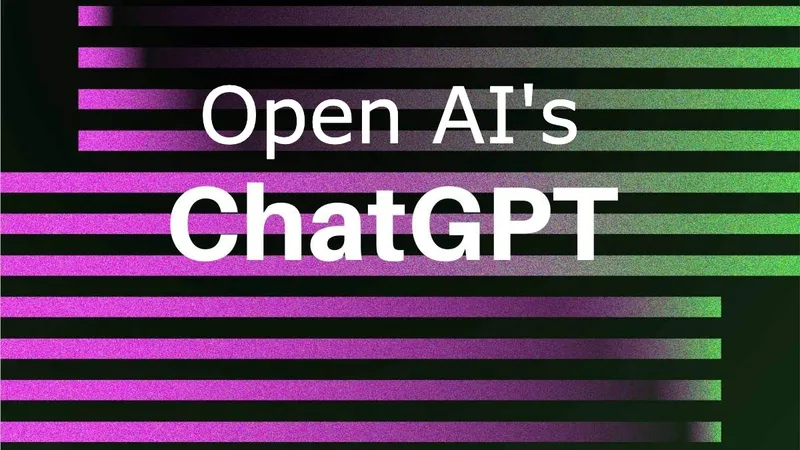ChatGPT in education: How students and teachers can use AI to transform learning
The future integration of ChatGPT should aim to enhance and complement traditional teaching methodologies, fostering a harmonious co-existence between human educators and AI-powered learning tools.
Today, technology has a big role to play in education. The pandemic gave way to the rise of online learning and edtech startups that didn't let the learning gap widen despite schools being shut.
Although tech interventions have democratised the resources available to students and instructors, it has also increased disparities and led to distraction in the classroom. For better or worse, technology in the classroom is here to stay, and new options are being introduced all the time.
OpenAI, an artificial intelligence research and development company, introduced generative AI Natural Language Processing (NLP) software ChatGPT to the public in 2022. ChatGPT is a free tool that anyone with a device and access to the internet can use, making it widely accessible, especially for students who, in this period, they are all digital natives.
What is ChatGPT?
ChatGPT is an AI program that uses generative coding to receive, analyse, and produce a response that mimics human natural language. The program uses a transformer-based neural network with a massive database to analyse the input information and create a response. When a human user enters questions or commands into ChatGPT, the AI processes the text and generates the response based on the neural network data.
ChatGPT can have in-depth conversations, admit mistakes, and even write essays. While it can be a valuable tool due to its depth of knowledge, many in the education field wonder how ChatGPT will affect ethics, effort, credibility, and the overall future of learning and teaching.
How can teachers use ChatGPT?
1. Personalised instruction
ChatGPT can provide personalised assistance to students by answering their questions, clarifying concepts, and offering additional explanations. Teachers can integrate ChatGPT into online learning platforms or classroom tools to offer on-demand support.
However, ChatGPT would provide a quick, concise, and direct answer that students could read in real-time. In this way, it can complement the discussions and give teachers answers in real-time.
2. Virtual tutoring
ChatGPT can act as a virtual tutor, providing guidance and feedback to students outside of regular class hours. It can help with homework, provide practice exercises, or offer explanations for complex topics.
Although AI should not replace a teacher's lessons, it can serve as a practice tool for teachers to use in the classroom with something new to offer.
3. Evaluations
The tool can create evaluations. Teachers can input information into the AI program and provide context, and ChatGPT will generate a result. Although it may require some fine-tuning, it can be a great starting point for teachers to use when creating assessments from scratch.
4. Automation
Automation is everywhere, and it can help teachers streamline one of the most time-consuming tasks—grading. ChatGPT can grade and provide feedback on assignments, giving teachers more time to create engaging academic plans and focus their attention on students.
5. Grammar and writing assistance
Teachers can use ChatGPT to help students enhance their writing skills. Students can seek feedback on their essays, receive suggestions for improving their writing style, or get ideas for creative writing assignments.
In the age of social media and text language, it can be difficult for teachers to teach students grammar and writing. ChatGPT provides instant feedback for students, which can help them improve their writing skills.
AI can be used as a practice tool for teachers to employ in the classroom and give pupils something fresh, even if it shouldn't replace a teacher's lessons.

How can students use ChatGPT?
1. Assistance with assignments
ChatGPT serves as a valuable resource for students seeking help with their homework. By posing questions or problems, students can receive quick responses and guidance.
It is basically similar to using Siri, Google Assistant, or other virtual assistants.
2. Improving writing skills
Just like popular writing tools such as NoRedInk or Grammarly, ChatGPT can assist students in enhancing their writing abilities. Students can input sentences and request ChatGPT to provide corrections and suggestions for improvement.
3. Feedback and editing
Students can utilise ChatGPT for receiving feedback on their essays or assignments. By copying their work into the text box and students can ask the ChatGPT to analyse and provide constructive feedback and allowing them to make necessary revisions before submitting their final work.
4. Research
ChatGPT is very smart and equipped with vast resources. That being said, its database is based on internet sources, some of which are inevitably inaccurate.
This means that students must use ChatGPT as a Wikipedia-type source. It can be a great way to build general knowledge and serve as a starting point, but it can't really be used as a citable source.
The future of ChatGPT in education
The future of ChatGPT in education holds immense potential for transforming the learning experience. Here are some key aspects of ChatGPT's future in education:
1. Personalised learning
ChatGPT can adapt to individual students' needs, providing tailored instruction and support. As technology advances, it will become even better at understanding students' learning styles, preferences, and knowledge gaps, enabling more personalised and effective learning experiences.
2. Ethical and inclusive AI
As ChatGPT evolves, there will be a growing emphasis on ensuring ethical use and addressing biases. Efforts will be made to enhance inclusivity and cultural sensitivity, allowing ChatGPT to provide equitable learning experiences for students from diverse backgrounds.
3. Multilingual education
ChatGPT's language capabilities can promote multilingual education. It can help students learn different languages by engaging in conversations, providing language-specific feedback, and facilitating language acquisition through interactive practice.
While ChatGPT's potential is promising, it's important to strike a balance between leveraging AI technology and preserving the human element in education. The future integration of ChatGPT should aim to enhance and complement traditional teaching methodologies, fostering a harmonious co-existence between human educators and AI-powered learning tools.
Edited by Kanishk Singh








